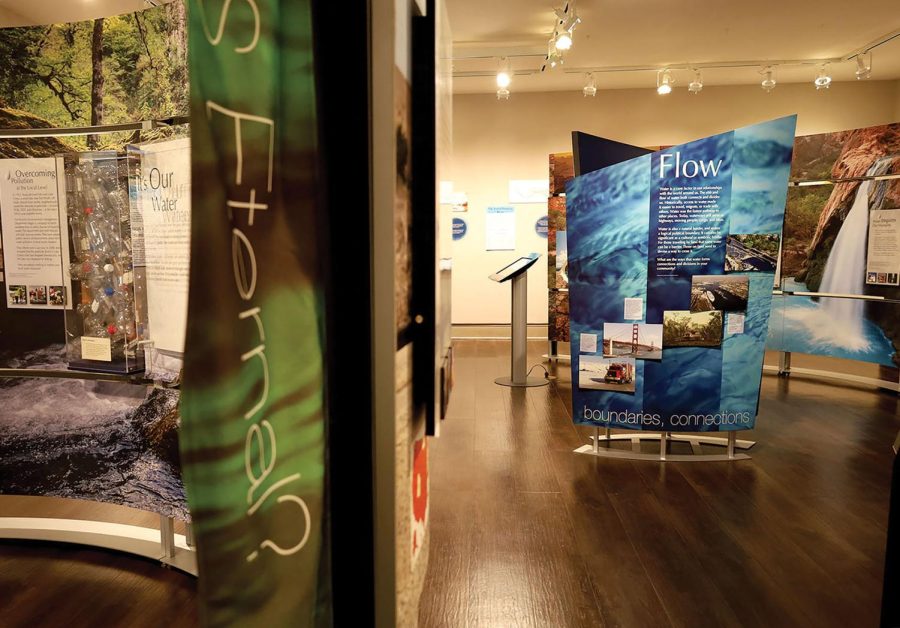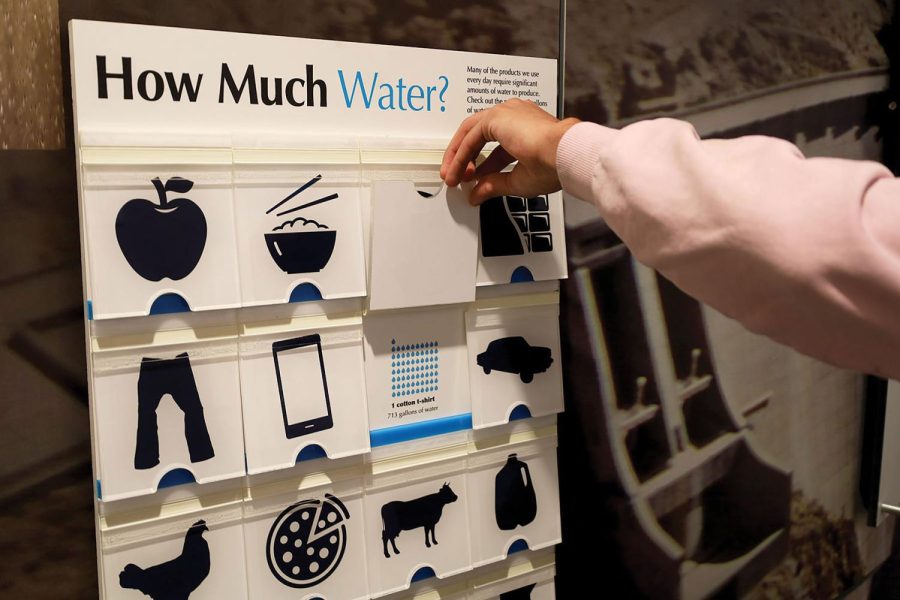As Earth Day approaches on April 22, the Centennial Museum and Chihuahuan Desert Garden are hosting the Smithsonian Institu-tion’s travel exhibit “Water/Ways,” hoping to raise awareness of how we depend on water not only for regular consumption but for every-day needs.
From March 5 through June 25, students are invited to attend the interactive exhibit that explains the various uses of water, such as the manufacturing of clothing, religious rituals, trade, recreational activities, and agriculture.
As the world’s largest museum, research and education complex, the Smithsonian Institution raises questions such as “How do Americans use water? How is water represented in our society? In what ways do we use water as a symbol?” according to the Smithsonian’s website.
“It’s (the Smithsonian section of the exhibit) telling a national story, and we’re telling more of a local story. They complement each other,” said Centennial Museum and Chihuahuan Desert Director Daniel Carey-Whalen. “The Smithsonian exhibit talks about watersheds, where people are getting their water, and how a water site connects us. Simultaneously, we are telling the story of our watershed (Rio Grande).”
The exhibit invites the audience to reignite their connections to water by listing places where water is used recreationally, such as Rio Bosque, Ascarate Lake and Hueco Tanks.
According to the exhibit’s website, the purpose is for people to appreciate the beauty and richness of water, especially in the desert region.
“Dealing with water in the Southwest is such an important topic. I think it really is going to define us in the future, especially as we keep having these megadroughts, as global climate change keeps exacerbating weather patterns or just not getting the water that we used to get,” Carey-Whalen said.
During the exhibit, the public can learn about El Paso Water’s plan for a more sustainable future, by hoping to increase water sources by about 50 percent by 2050. The methods discussed are the expansion of desalination plants to use brackish water, and more advanced purification methods to treat wastewater.
Carey-Whalen said he has lived in El Paso for 10 years and recognizes the job that El Paso Water has been doing.
According to Carey-Whalen, El Paso is home to the largest inland desalination plant, and deals with two major problems in the area, not having enough water and the salinity of water. The desalination of water is going to allow El Pasoans to get more drinkable water from brackish water.
The exhibit also focuses on the actions that have been taken to help the natural environment survive through the scarcity and pollution of water.
The restoration of native habitat in the Rio Bosque Wetlands Park has increased biodiversity, and now more birds, coyotes, bobcats and beavers can be spotted in the region. Not only has the fauna recovered, but flora too. Comparative images from 1997 to 2019 are part of the exhibit to show how the restoration project has brought life back to the river channels in the region.
To make the exhibit more dynamic and entertaining for the audience, visitors can find booklets, objects such as a view master with travel reels, native American ceramic jars, 3D maps of the region, and interactive displays. A touchscreen is included with information on topics regarding how water has influenced art, its relation to spirituality, description of deep ocean environments and among other fun facts.
“We want everyone to visit the exhibits. So many of our problems aren’t gonna be solved by technology; they’re gonna be solved by people. We gotta get people in the same room and figure out how can we help,” Carey-Whalen said.
The Centennial Museum and exhibit are open to the public from 10 a.m. to 4p.m., Monday through Saturday, with no admission fees.
For information about the exhibit visit Centennial Museum’s website and the Smithsonian Institution’s website.
Maria L. Guerrero Duran is the web and copy editor and may be reached at [email protected]; @bymariaguerrero both on Instagram and Twitter.













